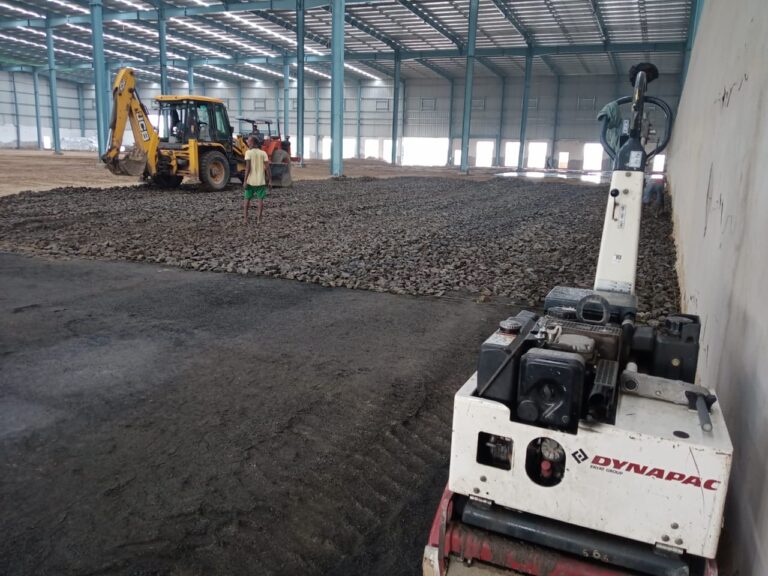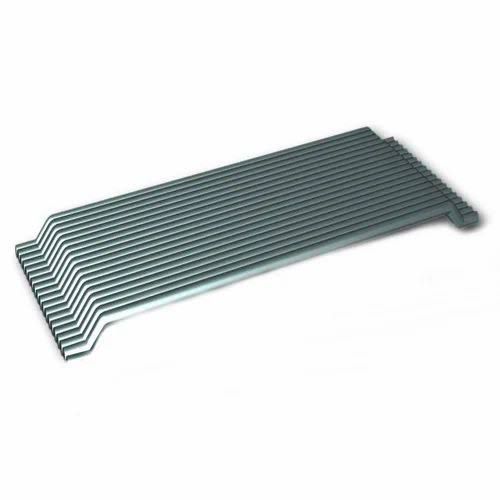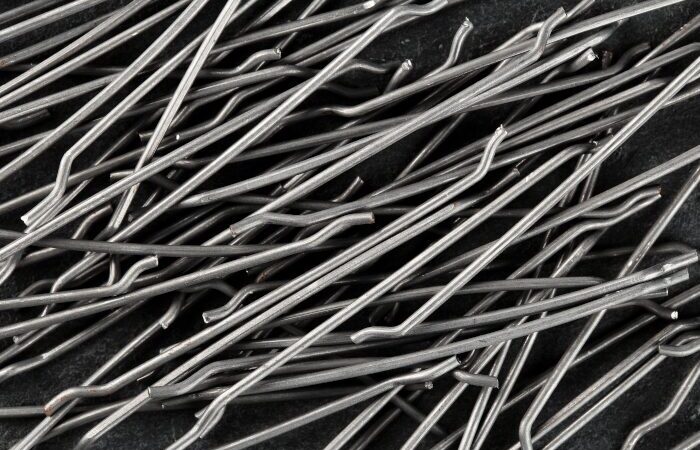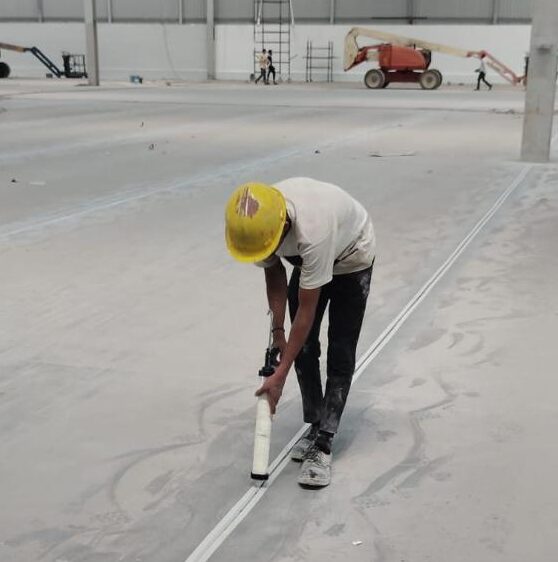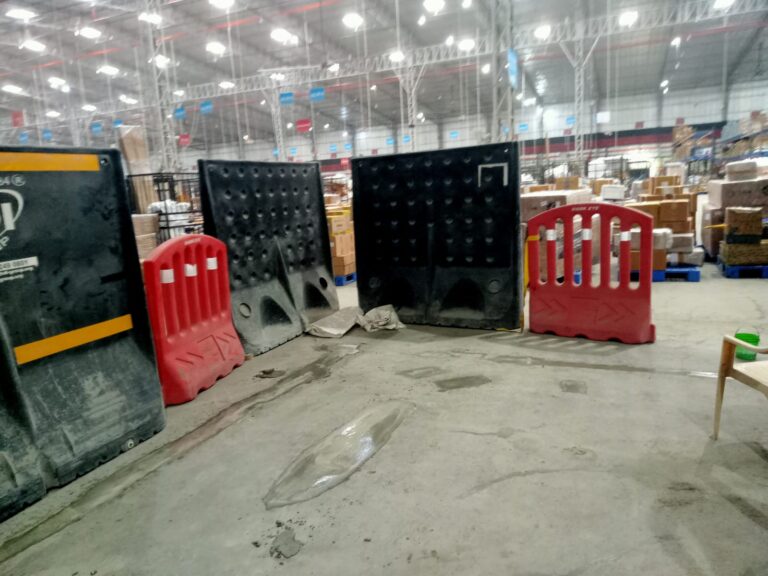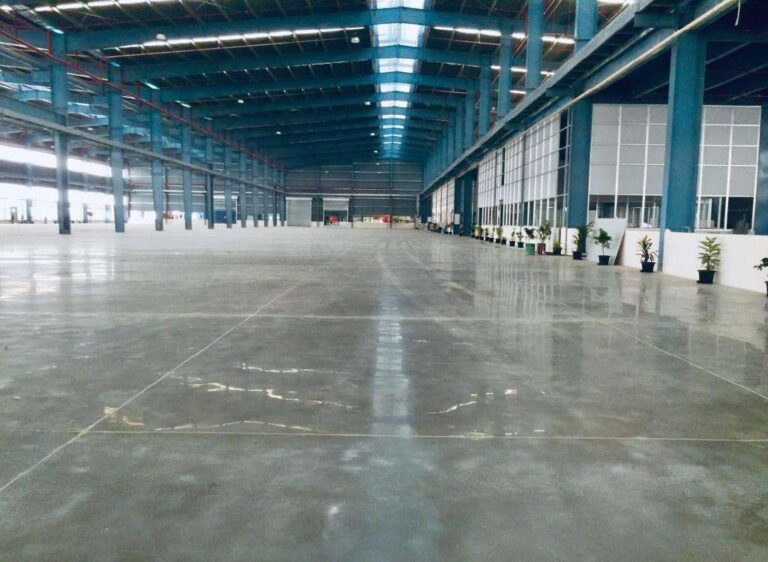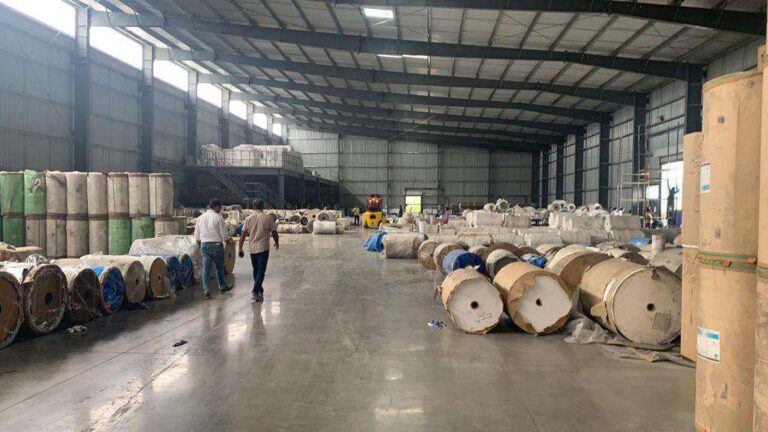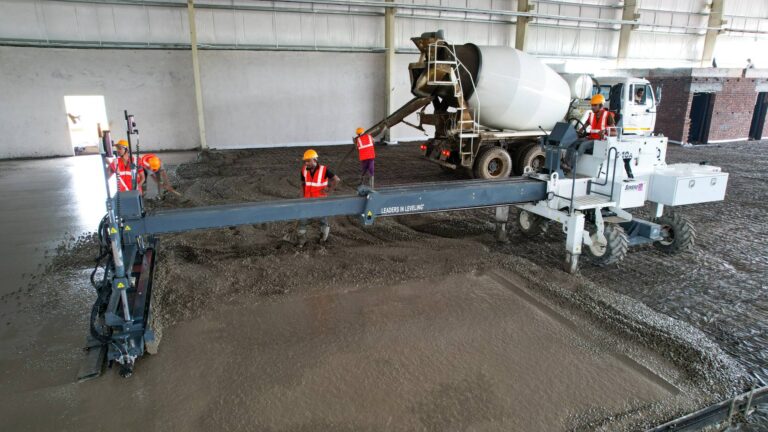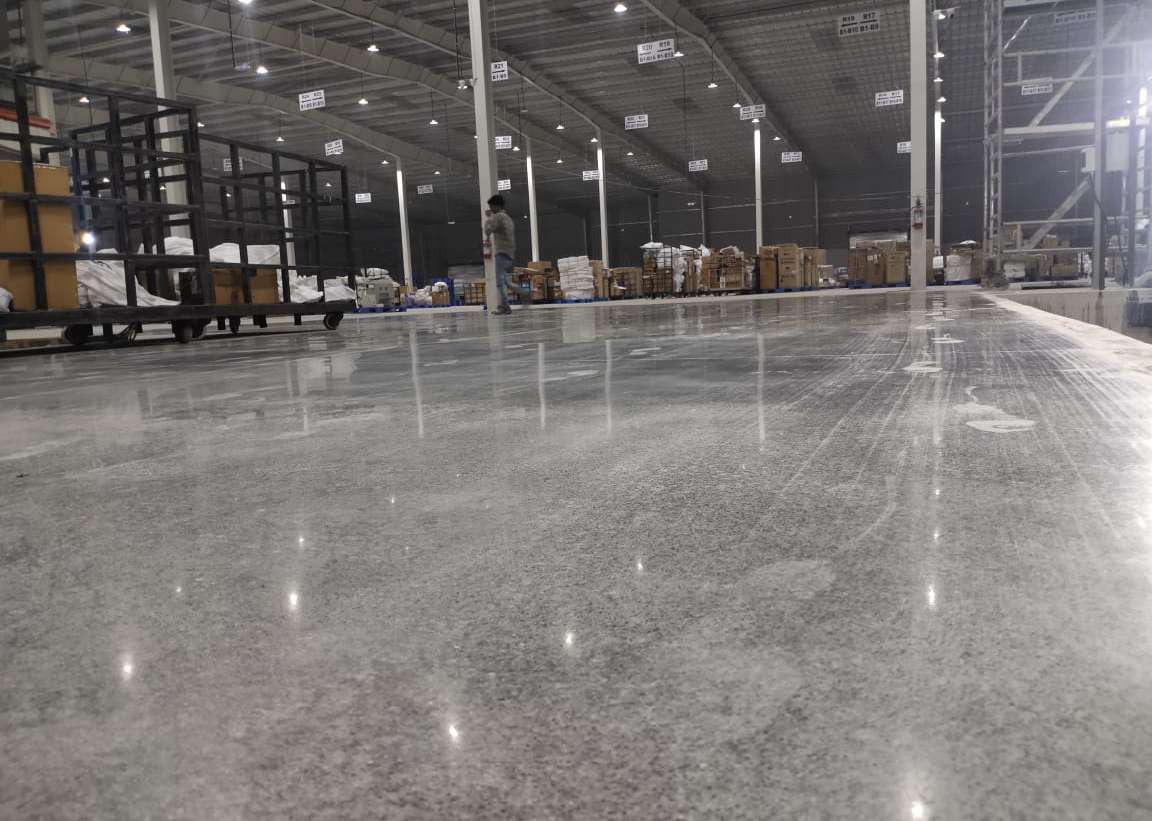Warehouse flooring requires a distinct type of material and technology to be used taking in consideration the minimum maintenance due to stored material and heavy density per square area.
In warehouses and distribution centres the ground-floor slab is critical to the effective functioning of the facility, but there remains a considerable misunderstanding concerning the specification, design, and construction of this element of the works. Specifications are still often too onerous for appropriate cost-effective construction, or too vague, with conflicting requirements, resulting in unsatisfactory floor performance. There is no specific standard covering the design of ground-bearing slabs, and the structural design codes are not usually applicable to these floors.
Although construction quality has shown some improvement in recent years with the advent of new techniques and materials, the floor is often still considered to be part of the ‘ groundworks’, a notoriously low-skilled, highly competitive sector of the industry, and is procured accordingly. The new techniques themselves have resulted in some difficulties, with poor planning, and a lack of understanding of concrete behaviour usually being to blame. It is not surprising, therefore, to find that the majority of the enquiries to the Concrete Advisory Service concern floor slab problems. There is also often a perception that the slab is one of the most straightforward elements of any project. Hence, the overall attention paid to detail in design and construction is less than proportional to its ultimate importance to the efficient, and in certain cases safe, operation of the facility.
Indus Floors has set some principal areas of consideration when specifying and designing warehouse floor slabs, identifies certain existing good and bad practices, and suggests the way forward to ensure that these floors are always constructed so as to be fit for purpose.
Floor slab function
Simply, a floor slab functions to distribute, without deformation or cracking, the loads applied to it to the weaker sub-grade below, in the case of a ground-bearing slab, or to the piles supporting it if designed as a suspended ground slab, and to provide a suitable wearing surface upon which the operations in the facility may be carried out efficiently and safely. Different specific properties are required by different industries, and even by competing operators in the same industry. One sector of industry that is particularly sensitive to the need for fit-for-purpose floor slabs is warehousing and distribution. Warehouse operators typically require that their floor slab should:
- be capable of supporting applied loads without cracking or deforming;
- have a minimum number of exposed joints;
- have maintenance-free joints that do not impede truck operating speeds;
- be dust-free (i.e. highly abrasion-resistant);
- have tolerances appropriate to the materials handling system to be used;
- be smooth and easy to clean, but not slippery;
- be flexible enough to accommodate possible future changes in operating systems;
- contribute to a safe, pleasant working environment.
Floor loading
2. The frequently quoted u.d.l. specifications are inadequate for the purpose of the structural design of ground-floor slabs. Such specifications are unrepresentative of the actual loading patterns to which slabs in warehouse facilities are subjected. Only in rare cases of block-stacking is the u.d.l. condition relevant, and even here the aisles are unloaded, thus the aisle width itself may become a more critical factor in the design.
3. Neal and Judge addressed this issue by defining non-dedicated warehouse floor loading in terms of four classes.’ Each of the proposed classes had typical critical loadings specified, depending on floor use.
4. When warehouse floors are to be designed for a known set of loadings, the specification should include both the magnitude and distribution of the point loads, any restrictions to be placed on the proximity of joints in relation to these loads, and the frequency of any dynamic loads such as fork-lift truck movements.
Structural design
5. If a slab in a warehouse is to be durable then random cracks are to be eliminated, since under trafficking these will deteriorate, possibly ultimately rendering the surface unserviceable. Cracks result from tensile stresses exceeding the tensile capacity of the concrete. In ground slabs one of the causes of these stresses is slab flexure under load. In other flexural applications the high compressive strength of concrete is exploited and it is reinforced with steel to provide the necessary tensile strength. In order for this reinforcement to contribute to the load-carrying capacity of the composite section, the concrete in the tension zone has to crack. This is clearly not desirable in floor slabs. Non-suspended ground slabs should therefore be designed such that the flexural stresses generated under and around loads do not exceed a factored proportion of the tensile strength of the concrete.
Ground-bearing slabs
6. For many years it has been accepted that the work of Westergaard provides a sound basis for ground-slab design.2 His original theoretical work has been modified by experiment, and all of this was brought together in the authoritive Cement and Concrete Association report, published in June 1982/3
7. CBR test results alone should be considered too unreliable for slab design, as they reflect only a comparatively shallow stress bulb, and hence do not indicate to what extent the sub-grade is stressed at depth. An adequately defined site investigation is therefore necessary, particularly in the case of high-bay warehouses with materials handling systems sensitive to floor tolerances which can be disturbed by even very small degrees of consolidation. Further, as loadings have increased, some ground-bearing slabs located on plastic soils, designed in accordance with the recognized documents, but based on inadequate soils information, have suffered tensile cracking longitudinally in the aisles as a result of differential consolidation between these unloaded areas and the heavily loaded sections beneath the racks. There is no authoritative guidance to this design problem at this time, although computer studies currently being undertaken by F. R. Neal in collaboration with South Bank University are expected to yield appropriate solutions.

